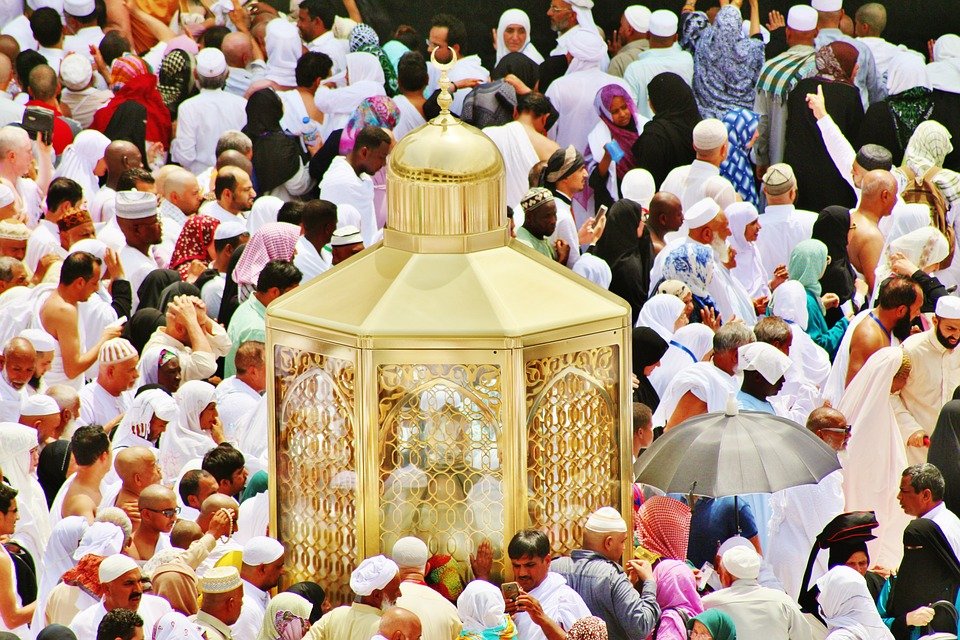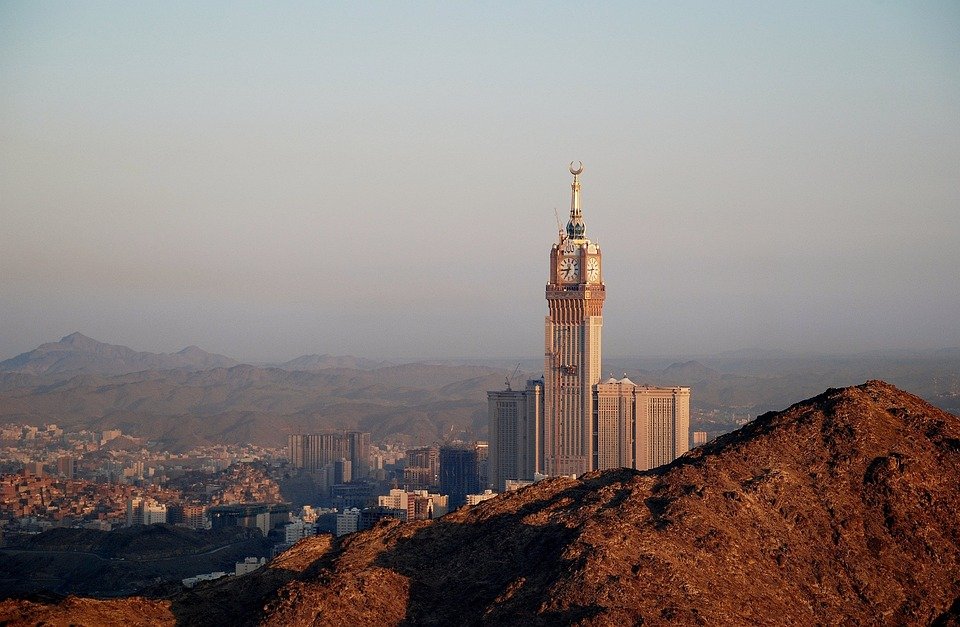You are here to read: Why is the Hajj in Summer? Insights and Significance Explained – A Thoughtfully Written Guide Offering Spiritual Wisdom and Travel Advice for Every Pilgrim who is going on holy journey of Hajj or Umrah.
The question of “why is the Hajj in summer” often arises among those interested in Islamic practices and traditions. This pilgrimage, one of the five pillars of Islam, takes place during the Islamic month of Dhu al-Hijjah, which can occur in summer months in many parts of the world. In this article, I promise you will find a proper guide that not only answers this question but also explains the historical and religious significance behind the timing of Hajj. By the end, you’ll have a clearer understanding of why thousands of Muslims travel to Mecca during the heat of summer to fulfill this essential religious duty.
In my opinion, understanding the timing of Hajj carries great importance. The summer months hold significance in the Islamic lunar calendar, marking a period where believers gather from around the globe to express their devotion. I think it’s essential for us to appreciate how these hot summer days serve to unify Muslims in faith and dedication. With nine years of expertise in the Umrah and Makkah travel field, we at Airlinkhajjandumrah.com are well-equipped to provide insights and significance explained on this topic. I feel confident that our experience can enhance your understanding of “why is the Hajj in summer,” and why this pilgrimage is so vital to the Muslim community.
Why is the Hajj in Summer? Insights and Significance Explained
Hajj stands as one of the most profound spiritual endeavors in Islam, drawing millions of pilgrims every year. One question often arises: why does Hajj take place in summer? This article will explore the reasoning behind this timing and the significance it holds for those who partake in this sacred pilgrimage.
The Timeframe of Hajj
The Islamic calendar follows the lunar cycle, with months shorter than the solar calendar. Hajj occurs during the 12th month, Dhul-Hijjah. This time shifts yearly, sometimes falling in summer. The timing allows for a unique congregation of Muslims under the scorching sun, forging a sense of unity among the diverse participants.
The transition to summer holds both challenges and rewards. The heat can test physical endurance, but it also amplifies the spiritual experience. Pilgrims come together, dressed similarly and sharing their dedication to faith, creating a vibrant atmosphere of communal reverence.
Spiritual Reflection in the Heat
Participating in Hajj during summer prompts deep reflection. The intensity of the sun mirrors the trials faced by the Prophet Ibrahim and his family. Their unwavering faith in challenging conditions serves as an inspiration for pilgrims today. The heat becomes a reminder of sacrifice and devotion, pushing individuals to connect more profoundly with their spirituality.
Many pilgrims find that discomfort leads to personal transformation. They shed distractions from daily life and focus solely on prayer and worship. In this challenging climate, one’s faith grows stronger, highlighting the essence of Hajj as a trial and a blessing.
You're at the middle of this awesome post at AirlinkHajjandUmrah.com through: Why is the Hajj in Summer? Insights and Significance Explained. Keep reading, it gets better!
Unity Among Diversity
Each year, millions gather from every corner of the globe. The summer month fosters a unique environment where people from different cultures and backgrounds unite. Standing shoulder to shoulder at the Kaaba, each pilgrim shares a similar purpose, deepening their sense of belonging within the global Muslim community.
This blending of diverse cultures enriches the spiritual experience. Pilgrims share stories, traditions, and perspectives, fostering mutual respect and understanding. The collective spirit enhances the Hajj, transforming it from a mere ritual into a powerful testament to faith and unity.
Learning Through Adversity
Enduring the summer heat teaches valuable lessons. The discomfort encourages resilience and fortitude, qualities revered in Islam. Each step taken in the suffocating warmth serves as a reminder of the tenacity exhibited by previous prophets and pilgrims.
Facing adversity, pilgrims often find strength within themselves. They learn to rely on prayer and seek comfort in their faith. Overcoming trials during Hajj catalyzes personal growth, allowing individuals to return home with fresh insights into their lives and beliefs.
Camaraderie with Fellow Pilgrims
The communal experience of Hajj strengthens bonds between pilgrims. Enduring the summer conditions fosters friendships and alliances. People meet under the sun’s relentless rays, sharing water bottles, snacks, or simply moments of respite. These interactions create lasting memories and experiences.
This camaraderie enhances the pilgrimage experience. Through shared challenges, feelings of isolation dissipate, replaced by collective joy. As the days unfold, friendships bloom, leaving participants with a sense of belonging long after the pilgrimage concludes.
Heightened Moments of Worship
Summer’s brightness provides a backdrop for powerful moments of worship. The intensity of the sun sharpens focus and deepens prayer experiences. Pilgrims often find that their devotion reaches new heights while surrounded by the vastness of the desert and an ocean of fellow believers.
The rituals during Hajj, such as the Tawaf around the Kaaba and standing at Arafat, resonate more deeply in this summer setting. The sun becomes a symbol of divine presence, enhancing the spiritual significance of every action taken. Each prayer, each supplication, feels amplified by the warmth.
Historical Significance of Summer Timing
Historically, summer has played a role in the significance of Hajj. Many scholars believe that the timing aligns with agricultural cycles. Pilgrims can undertake their journey while still being involved with their harvests. This practical aspect prepared the faithful for an arduous journey while ensuring their livelihoods remained secure.
Additionally, summer was historically when safety and accessibility increased. During this time, more trade routes remained secure, enabling travelers to reach Makkah with a sense of safety. Thus, the summer months align with both historical context and practical pilgrimage logistics.
Encouraging Personal Sacrifice
Hajj embodies the notion of personal sacrifice. Performing rituals during the summer intensifies the notion of giving up comfort for faith. Pilgrims experience the fleeting nature of earthly pleasures, becoming acutely aware of their spiritual needs.
Adversity challenges participants to reflect on their priorities. Sacrificing personal comfort for spiritual fulfillment showcases the deep connection between faith and resilience. It highlights the importance of perseverance in one’s spiritual journey.
Preparing for the Aftermath
Experiencing Hajj in the summer also prepares believers for life beyond the pilgrimage. The lessons learned amid the summer sun linger long after returning home. Participants grow in patience, empathy, and understanding, equipping them for challenges in everyday life.
Those who engage in this pilgrimage often report transformative changes. The experience inspires individuals to strive for greater compassion and connection with their communities. In this way, the summer timing speaks volumes about the journey of the heart and spirit beyond the sacred pilgrimage.
Conclusion: Embracing Summer’s Challenges
The choice for Hajj to fall in the summer offers profound layers of meaning. Each pilgrim faces unique challenges that enhance their spiritual connection. Through unity, reflection, and personal sacrifice, they discover the essence of what Hajj means.
The summer climate, while demanding, becomes a source of strength and transformation. Embracing that challenge shapes not just belief but also communities, reminding us of our shared experiences and the rich tapestry of faith.
Through the trials of summer, pilgrims witness the beauty of resilience, ultimately fortifying their bond with their faith and each other.
That wraps up Why is the Hajj in Summer? Insights and Significance Explained. Thanks for sticking with us till here! Share this: Why is the Hajj in Summer? Insights and Significance Explained with your friends.
Check our homepage at Air Link Hajj & Umrah for more awesome updates.
Some interesting posts are: 1: Umrah Mubarak, 2: When is Umrah closed 2026?, 3: When does Umrah start after Hajj 2026?
Mushu, an experienced Saudi Arabia traveler and writer, shares insightful tips and spiritual reflections to enhance Hajj and Umrah journeys for fellow pilgrims. He has been to Makkah and Madina from 2016 to 2023 many times and his posts will reflect this.







